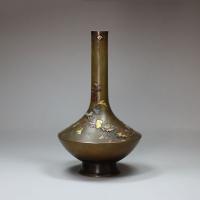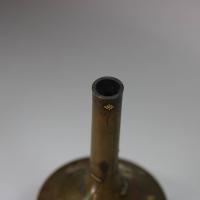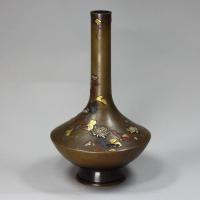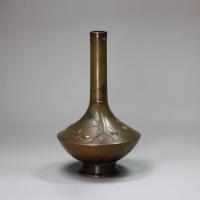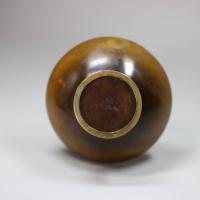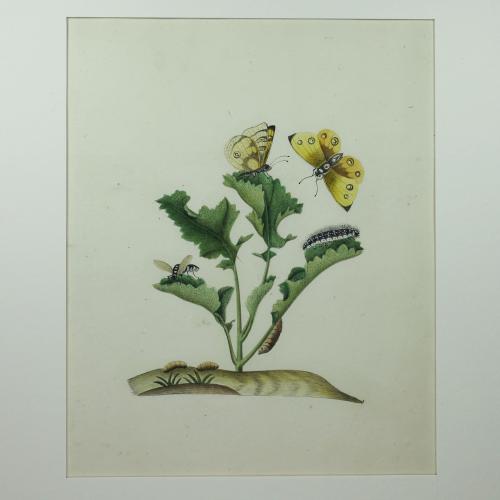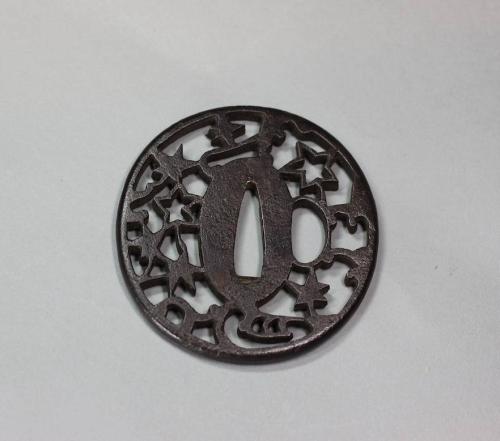
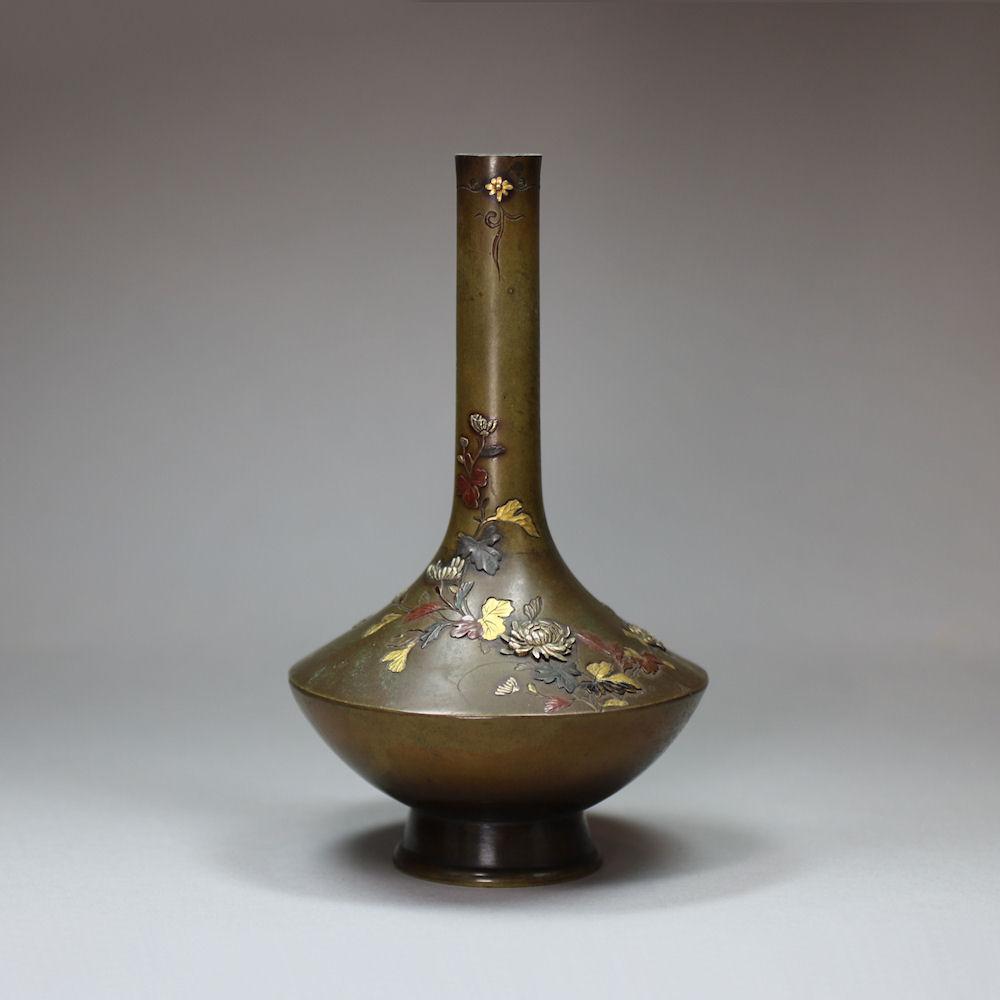
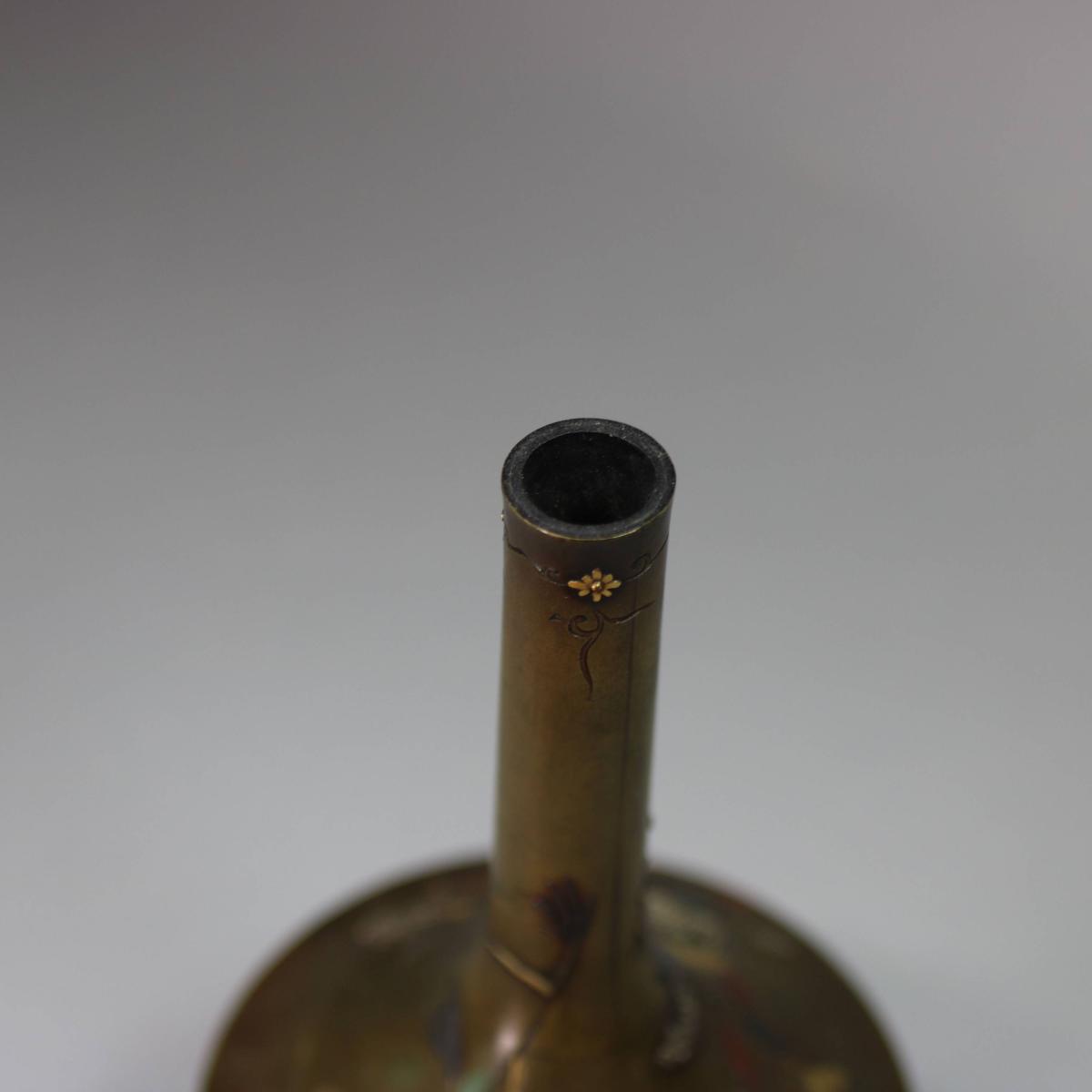
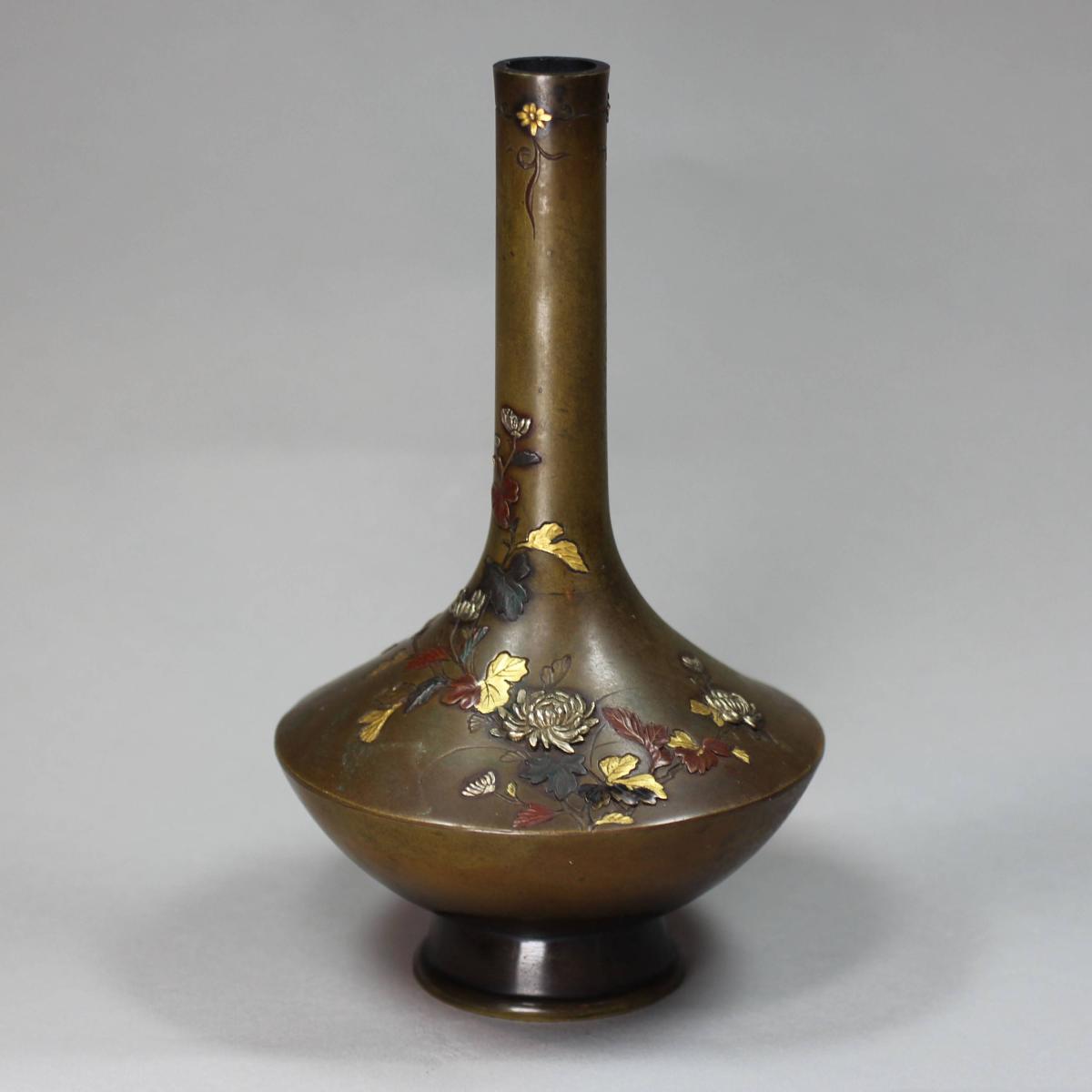
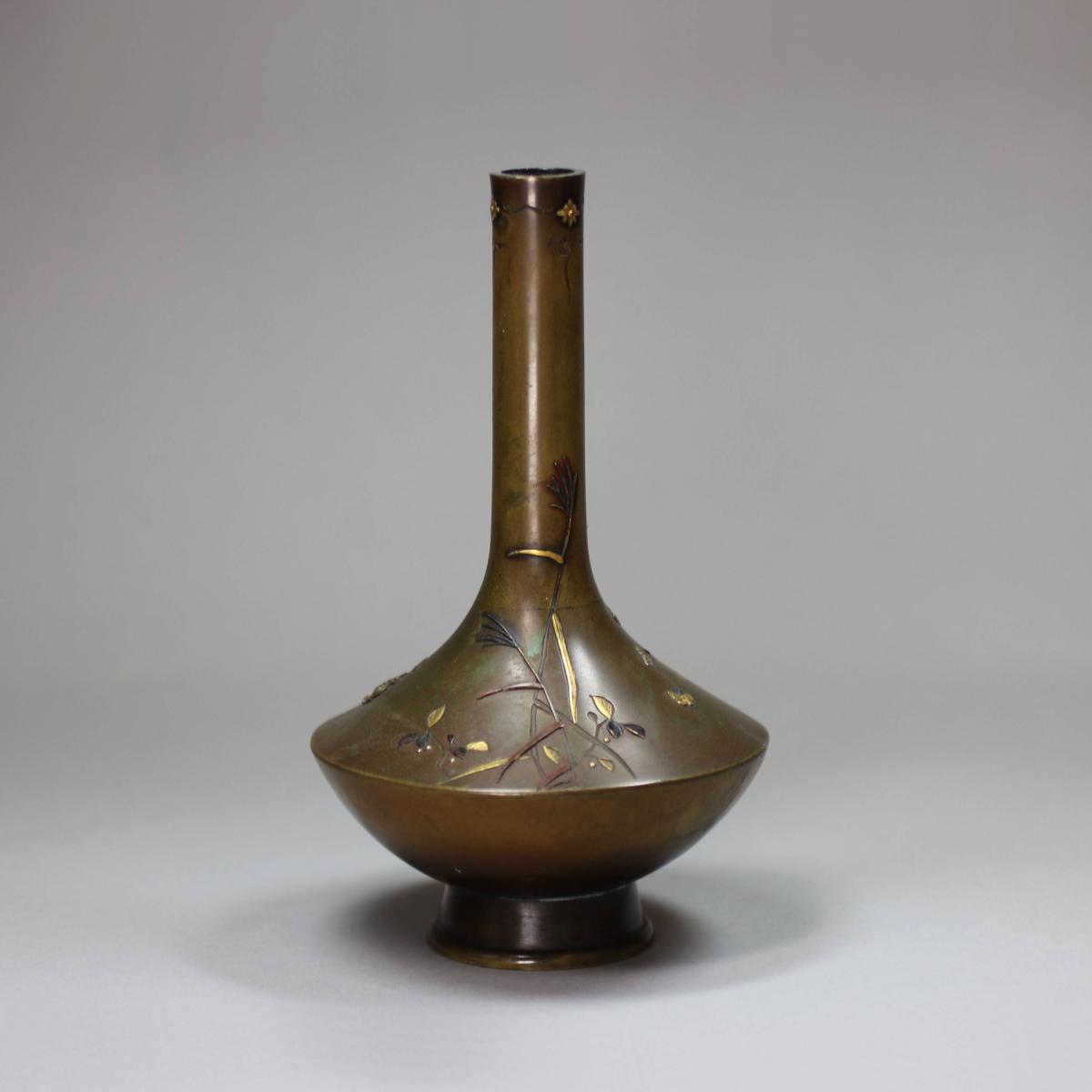
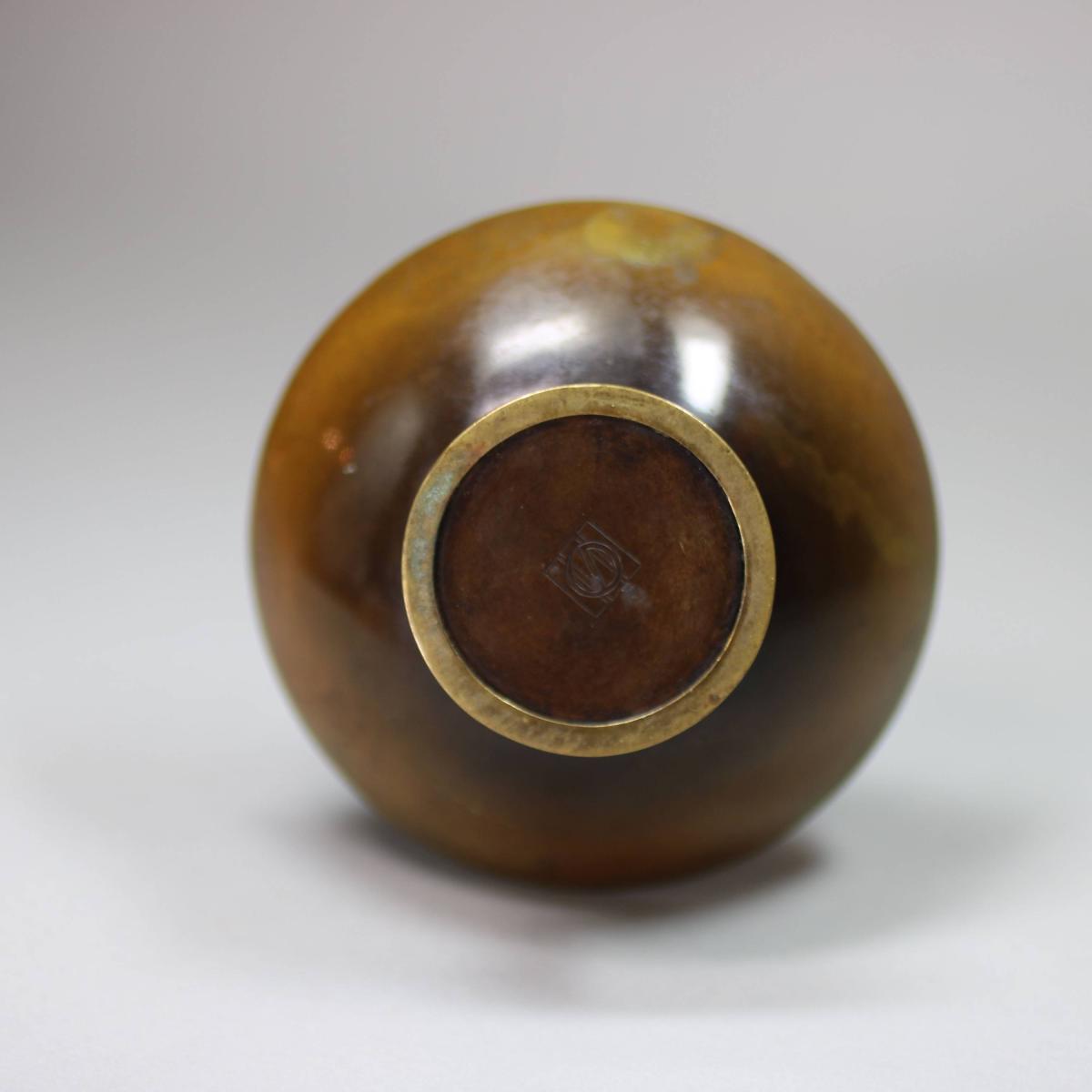
Price on application
This object is eligible for a Certificate of BADA Provenance
The BADA Standard
- Since 1918, BADA has been the leading association for the antiques and fine art trade
- Members are elected for their knowledge, integrity and quality of stock
- Our clients are protected by BADA’s code of conduct
- Our dealers’ membership is reviewed and renewed annually
- Bada.org is a non-profit site: clients deal directly with members and they pay no hidden fees
Japanese bronze vase, Meiji (1868-1912), by the Nogawa workshop, with flattened circular body, tall columnar neck and supported on a tall everted foot, finely engraved, incised and inlaid with gold, silver, shakudo and copper to the upper section with chrysanthemum, foliage and fine grasses, with a butterfly in flight above, the narrow rim with a trailing flowerhead motif, the base incised with the mark of Nogawa (の川)
Height: 14cm. (5 1/2in.)
Condition: good
The Nogawa workshop (野川商店, nogawa shouten) was founded in Kyoto in 1825 (Bunsei 8) by Noboru Nogawa. It was located on Shijo Otabicho, an area near the fashionable hotels frequented by wealthy European travellers after Japan ended its sakoku policy and opened its borders to foreign trade and tourism. For these early tourists, staying at an exclusive hotel such as the Kyoto or Miyako, while visiting workshops and showrooms to purchase Japanese craftwares as souvenirs became established components esssential to the experience of the 'Japan Tour'. Nogawa was one such manufactory that became very popular among European purveyors of Japanese curios and crafts, and was apparently successful enough to have participated in some of the major European and American 'Great Exhibitions' of the late 19th and early 20th centuries, including the 1893 Chicago Exposition, the 1900 Paris Exposition Universelle, the 1904 Louisiana Purchase Exhibition and the 1915 Panama Pacific International Exposition in Saint Louis. Nogawa also exhibited at the second and third Nakoku Kangyo Hakurankai 内国勧業博覧会 (Domestic Industrial Promotion Exhibitions) in Tokyo in 1881 and 1890, respectively, alongside innovations including spinning machinery and new agricultural technology. Workshops in Kyoto selling Japanese arts including porcelain, lacquerware and metalware advertised their showrooms and welcomed foreign travellers to visit and observe the manufacturing process. One such nineteenth century traveller was an American named Seaman A. Knapp, who was in Japan on behalf of the US Department of Agriculture to study methods of rice cultivation. In 1898 he wrote the following in his diary: 'I first visited Nogawa no.22 Shijo Otabi-chio, Kioto [sic], and bought a teapot cloisonne work and napkin ring of inlaid copper. Inlaid copper is beautiful work. Gold and silver wire images range from 30 to 100 sen per day. Artists get 3 sen per day'. An 1894 advertisement reads, in English, 'Nogawa, manufacturer of Bronze Ware Inlaid with Gold and Silver', while a 1902 version features a photograph of crafstmen at work in the studio with the text 'Factory will be shown at any time. Orders executed with care and promptitude'. Surprisingly, considering the workshop's apparent sucess, little documentation survives to offer modern collectors further information, though a Meiji photograph postcard of the workshop survives and can be viewed on 'Old Photos of Japan'. The mark, seen on the base of this vase, comprises a hiragana の (no) against the background kanji for river 川 (gawa).
(Ref. Duits, Kjeld (December 14, 2021). Kyoto 1890s: Bronze Ware Craftsmen, OLD PHOTOS of JAPAN. Retrieved on January 30, 2024)
Dimensions
Height: 14cm. (5 1/2in.)Condition report
GoodStock number
X822AThe BADA Standard
- Since 1918, BADA has been the leading association for the antiques and fine art trade
- Members are elected for their knowledge, integrity and quality of stock
- Our clients are protected by BADA’s code of conduct
- Our dealers’ membership is reviewed and renewed annually
- Bada.org is a non-profit site: clients deal directly with members and they pay no hidden fees


